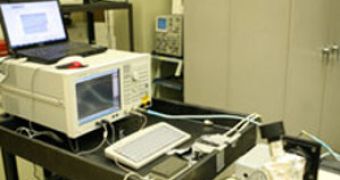Two men from the Penn State University seem to have built and tested a device capable of performing wireless transmissions based on reflected infrared light. This device was said to transmit data through the air at a speed six to 14 times faster than the most capable WiFi networks currently in existence. Not only that but the two inventors even state that their system can support data rates “well beyond” the 1 gigabit per second they claim to have reached.
The two inventors are Mohsen Kavehrad, professor of electrical engineering and director of the university's Center for Information and Communications Technology Research, and graduate student Jarir Fadlullah. Part of their setup modulated a beam of infrared light that was focused on the ceiling, with a specially modified photodetector being tasked with picking up the reflections. Such optical networks may prove more suitable and capable in hospitals, factories and aircraft, among others, because, in such cases, radio frequency transmissions can interfere with the control systems, navigation systems or medical devices.
"This probably will be the next generation wireless communications technology," says Zhengyuan Daniel Xu, professor of electrical engineering at the University of California, Riverside. Xu is also the director of the UC-Light Center, a consortium of researchers working on wireless optical communications at different UC campuses. "Light will give you higher data rates than radio frequencies, and RF already has a very congested spectrum."
"There are a lot challenges in demonstrating the high-speed capabilities of indoor optical signals," says Valencia M. Joyner, assistant professor of electrical and computer engineering at Tufts University. "The fact that he was able to demonstrate a one-gigabit-per-second system with diffuse light is extremely significant. That drastically reduces the complexity of the transceiver system."
Among the other practical uses of the technology is wireless networking for home theaters, where a system transmitting at 1.6 gigabits per second could relay two distinct TV channels across a room. This bandwidth is superior to that of any current radio system. In addition, such optical wireless networks would be more convenient because they have less interference and greater security, according to Kaverad. Unlike radio, light does not pass through walls. As such, reusing frequencies and intercepting transmissions would be significantly more difficult. It is also interesting to note that the spectral region for all light is unregulated worldwide, making commercializing of such optical wireless networks much easier.

 14 DAY TRIAL //
14 DAY TRIAL //